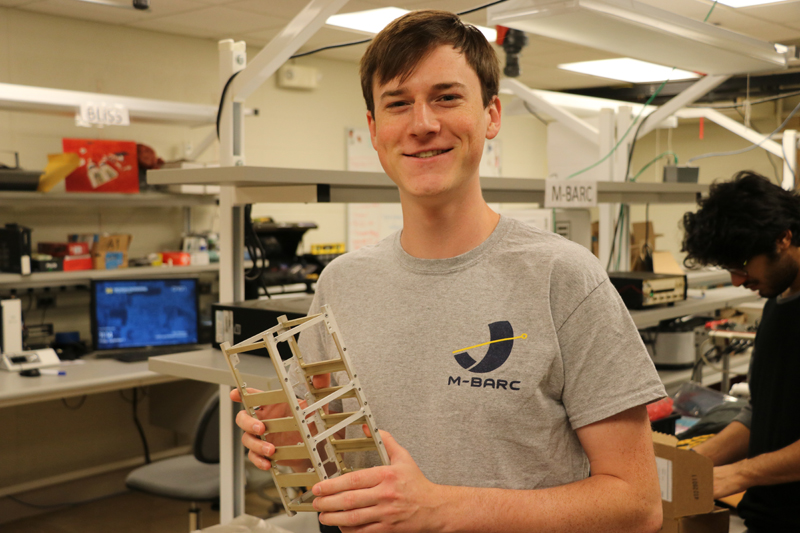Historic satellite launch brings U-M history to space
Planning to launch mid-2018, an exciting team of Michigan students is designing a space-based time capsule.

 Enlarge
Enlarge
An interdisciplinary team of Michigan students, including several from ECE, is working to design and launch the Michigan Bicentennial Archive (M-BARC), a space-based time capsule to celebrate the 200th anniversary of U-M. The capsule will be attached to a small satellite called a CubeSat and is planned to orbit Earth for 100 years in Geosynchronous Transfer Orbit (GTO) – the first CubeSat to enter orbit that high above the Earth.

 Enlarge
Enlarge
The time capsule will hold high-resolution photos of campus and student life alongside 1000 interviews from U-M students, faculty, staff, and alumni. Their stories will be etched onto silicon wafers using Electron Beam Lithography at the Lurie Nanofabrication Facility (LNF).
As Electrical Power Systems and Nanofabrication Team Lead, ECE graduate student Aakar Mehul Sheth oversees this task, working with LNF staff to encode the data and fit it safely on half a dozen wafers.
Sheth also oversees electrical power systems aboard the satellite, which will power the on-board communications, the radio, and distribute power from the solar cells. The system will have to be reliable and functional for the entirety of the long mission.
We want to create a legacy that lasts 100 years and celebrate the university’s technological advancements while we challenge ourselves to innovate and push the boundaries of space.Aakar Sheth
The CubeSat, called DSM-BARC, will also house a DNA experiment to determine its viability as a long-term storage method. This experiment will test the effects of space radiation on synthetic DNA, which will be encoded with the U-M mission statement.
A communications system is being developed to capture sensor data and format it to transmit readable telemetry to the ground station. This data will allow the team to analyze the health of the system as the mission goes on. Students working on the system include ECE graduate students Ziqi Zhang, Communications and Data Handling (CDH) Team Lead, and Zhusheng Wang, member of the CDH team.

 Enlarge
Enlarge
DSM-BARC is planned to launch in mid-2018 with the help of United Launch Alliance. This CubeSat will hold the time capsule, as well as serve as a platform to test the power and communications systems of a CubeSat in GTO.
CubeSats have so far only been tested in Low Earth Orbit, and typically aren’t designed to withstand higher orbits. GTO begins at around 22,000 miles above sea level. The structure of the CubeSat weighs 2 kg, and is built to provide radiation shielding through 2 mm thick walls on all 6 sides of its surface.
The craft will also need to stay in Earth’s orbit for a century. To do that, it will be the first U-M CubeSat containing a propulsion system. Without one, its orbit would start to decay from the moment it launched.
The team is looking forward to presenting their satellite, time capsule contents included, at a U-M Bicentennial event October 27th, during Homecoming weekend.












 MENU
MENU 
